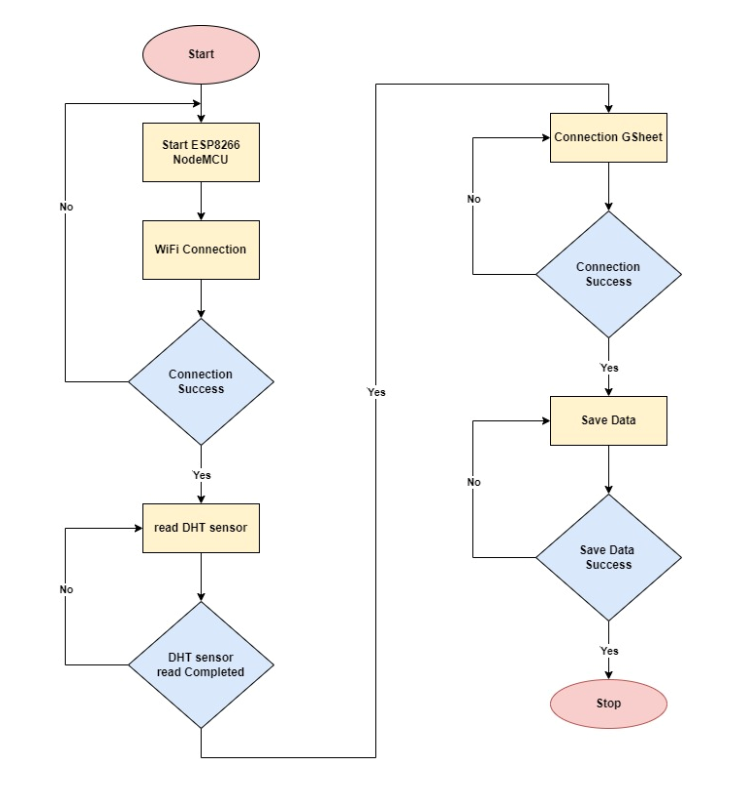IoT-Driven Soil Moisture Monitoring in Organic Rice Cultivation
Keywords:
Internet of Things, organic agriculture, soil moistureAbstract
This research article explores the Internet of Things (IoT) in organic agriculture, focusing on data monitoring. The IoT devices and connected technologies have created new opportunities for agricultural providers to monitor and gather data across traditional farm settings. This study presents the development of a custom IoT device equipped with various sensors, air temperature, humidity and soil moisture sensors, to continuously monitor hydrology and soil data. Data collected from these devices are securely transmitted to Google sheet file and NETPIE2020 for real-time analysis. The article discusses the technical aspects of the IoT device, the data transmission and storage infrastructure and the implementation algorithms for predictive soil moisture data. Furthermore, the results of a pilot study in which the IoT device was tested on a group of organic agriculture. The study demonstrates the potential of IoT in improving outcomes, reducing time and enhancing the quality of data through continuous remote monitoring. The findings of this research suggest that IoT has the potential to revolutionize the agriculture industry by providing proactive and personalized solutions. The results efficiency evaluation results by 5 experts show that a total mean of 3.86 and a standard deviation of 0.30. Our study optimal soil moisture levels for rice cultivation in Chainat Province, providing guidelines for maintaining these levels to maximize yield. Furthermore, the research extends the data collection period to analyze the impact of temperature and humidity on rice growth, valuable insights into how these environmental factors interact with soil moisture to influence crop health (30-40%). The practical benefits and effectiveness of the IoT system, user-friendly guidelines and tools are developed to support farmers in making data-driven decisions, ensuring successful adoption and utilization of the technology.
References
N. Arunrat, P. Kongsurakan, S Sereenonchai, and R. Hatano, “Soil Organic Carbon in Sandy Paddy Fields of Northeast Thailand: A Review,” Agronomy, vol. 10, no.8, 2020, https://doi.org/10.3390/agronomy 10081061.
C. Sawatdisan, “Organic Agriculture Handbook. (For farmers)”, Surat Thani: Agricultural Research and Development Office Region 7, Department of Agriculture, 2021.
Rice Department. “Rice: planting technology and post-harvest management.” 2nd printing. Bangkok: Rice Production Promotion Office, Rice Department, 2013.
S. Pakpitak, K. Dongsongkhram, S. Onlao, K. Yuttaart and U. Pimphasri, “Development of an automatic watering control system through wireless sensors to increase the yield of juiced sugarcane” Academic Journal of Information Technology Applications, vol. 7 no. 2, pp.17-30, 2021.
M. Alfawair, “Internet-Of-Things: A System Development Life Cycle (Sdlc)”, Journal of Theoretical and Applied Information Technology, vol. 100, no. 6, pp. 1643 – 1653, 2022.
M. Melinda, S. R. Ramadhan Na, Y. Nurdin, and Y. Yunidar, “Implementation of System Development Life Cycle (SDLC) on IoT-Based Lending Locker Application ”, J. RESTI (Rekayasa Sist. Teknol. Inf.) , vol. 7, no. 4, pp. 982 – 987, 2023.
K. Bunluewong and O. surinta, “Semi-Automated Mushroom Cultivation House using Internet of Things,” Engineering Access, vol. 7, no. 2, pp. 181–188, 2021, doi: 10.14456/mijet.2021.24.
Thani Sriwongchai and Sarawut Rungmekharat, “Rice cultivation” 2nd printing. Bangkok: Kasetsart University, 2015.
Utilization Promotion Office Agricultural Research Development Agency (Public Organization). “Complete rice production with farmer participation,” https://www.arda.or.th/, 2017.
U. Bophimai, N. Lonkunthos, A. Wannakayont, and T. Sittichantasen, “Development of organic intelligent technology system,” Journal of MCU Nakhondhat, vol. 7, no. 11, pp.63-78, 2020.
A. Boonhuay and S. Chaephan, “A Promising Rice line for a Rainfed Area in Chai Nat Province, Khao Jek,” Academic Seminar of the Upper Northern and Lower Northern Rice Research Center Group, pp.327-343, 2014.
P. Suanpleng and P. Chaemchan, “A smart farm prototype with an Internet of Things (IoT) Case Study: Thailand,” Journal of Advanced Agricultural Technologies, vol. 6, no. 4, pp. 241-245, 2019.
Satit Saengchawee, Interview. Organic rice farming in the Young Smart Farmer group, Ban Chian Subdistrict, Han Kha Subdistrict. 2022.
Udom Dok Daeng. Interview. Organic rice farming in Den Yai Subdistrict, Hankha District, Chainat Province. 2022.
Q. Feng, D. Liu, and J. Gong, “Soil moisture prediction using machine learning algorithms: A review,” Agricultural Water Management, vol. 213, pp. 1-14, 2019.

Downloads
Published
How to Cite
Issue
Section
License

This work is licensed under a Creative Commons Attribution-NonCommercial-NoDerivatives 4.0 International License.








